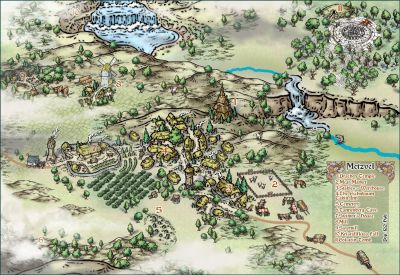
Monsen
Monsen
About
- Username
- Monsen
- Joined
- Visits
- 693
- Last Active
- Roles
- Administrator
- Points
- 8,947
- Birthday
- May 14, 1976
- Location
- Bergen, Norway
- Website
- https://atlas.monsen.cc
- Real Name
- Remy Monsen
- Rank
- Cartographer
- Badges
- 27
-
Switching from Non-visual to Visual when moving/resizing an object
-
Live Mapping - Lava Caves & Virtual Tabletops
I need a cave with some lava for an upcoming encounter. You know the kind, those with open lava pools that only appear in fantasy and isn't particularly realistic, but makes for an interesting gaming scene. I'll be playing around with getting started on this map, as well as show you how to handle exporting it for Virtual TableTop use.
As usual, you can check out the video on YouTube, or watch it in the embedded player here. See the sidebar to see the scheduled time in your time zone, or visit it on YouTube where you can also see the schedule, as well as set a notification for when I go live.
-
Old map (saved as pdf) crashes PC when attempt to print
If you have access to Acrobat Professional, it may also be worth trying to feed it through the PDF optimizer, flatten the structure of the file.
Those old PDF's are pretty cool, because they contain actual vector data from CC3+, making them have the same "infinite" zoom capability that the original CC2 map it was made from. But unfortunately, that also means it is highly complex, which is why it probably crashes your readers now.
-
Colourising a textured fill tool
GE vshape SELBYP
GV vrandom RANDOM*360
You cannot use the commands like that. SELBYP doesn't return entities that can be stored in a variable, all it does is change the selection mode to be by prior instead of the normal selection procedure. Also note that GE doesn't actually store an entity, it stores a set of coordinates where the entity is located, that can be used to grab the entity but it doesn't store the entity itself.
Likewise, RANDOM doesn't have a return value. The command is used very similar to the GV and similar command, i.e.
RANDOM varnamewill cause a random number between 0 and 1 to be stored in varname. You can then manipulate this further.The SHADEPOLY command also need a second argument for the pitch.
Also be careful with those semi-colons. Commands in CC3+ are executed by using either a new line OR a semicolon. Using both means you are basically creating an empty line, and in CC3+ that means repeat the previous command.
You can find the correct syntax of all the commands in the table in the tome, or in the spreadsheet in
@documentation\tome\commands.xlsx -
ALBINO BEVEL
If you know the name of the fill to change to, the quickest is to use the
CHANGEFScommand. Type in the command (followed by enter), pick the poly when CC3+ asks for selection, hitDfor Do it, and when it asks for the new fill, type insolid white 20and hit enter. Changing it via the command line do require that you spell the new fill 100% correct though.Of course, you can also use the more common GUI dialog through :CC2MCHANGE:. If you wish the correct fill style to be pre-filled in this dialog, first use the
KEEP(:CC2KEEP:) command on another entity that has the correct fill, and when you then use change properties on the entity you want to change, the fill style you extracted from the other entity is already pre-filled, all you have to do is to check the check box in front to apply it.








